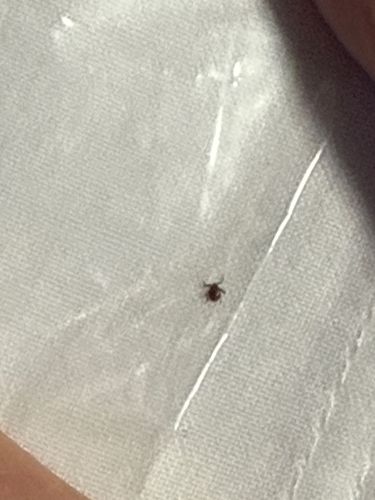Tick
Scientific Name: Ixodida (various species)
Order & Family: Acari (suborder), Ixodidae (hard ticks) or Argasidae (soft ticks)
Size: Unfed: 1 mm to 5 mm; Fully engorged: up to 10 mm or more depending on species and blood meal.

Natural Habitat
Wooded areas, tall grass, shrubs, forests, fields, and urban green spaces. They often reside on vegetation, waiting for hosts to pass by.
Diet & Feeding
Strictly hematophagous (blood-feeding) at all life stages (larva, nymph, adult). They feed on blood from mammals, birds, reptiles, and amphibians.
Behavior Patterns
Ticks typically undergo four life stages (egg, larva, nymph, adult). They are known for 'questing,' where they climb onto vegetation and wait with outstretched forelegs to attach to a passing host. Feeding can last from hours to days. Many species require a blood meal to molt to the next stage or to lay eggs.
Risks & Benefits
Risks: Ticks are significant vectors for a variety of pathogens, including bacteria (e.g., Lyme disease, Rocky Mountain spotted fever), viruses (e.g., tick-borne encephalitis), and protozoa (e.g., babesiosis), posing serious health risks to humans and animals. They can also cause tick paralysis. Benefits: In certain ecosystems, they can be part of the food chain for other invertebrates or small animals, though their ecological role is relatively minor compared to their medical importance as disease vectors.
Identified on: 9/27/2025